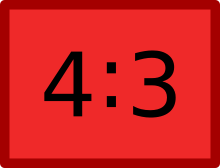Fractions, Decimals, and Percentages
Week One
What is a "unit"?
A whole does not have to be one!
Example: You bought 24 cans of soda but did not drink 2/3 of them. How much did you have left over?
Remember: There are different answers based on what you label the unit!
Unit= 1 can
Answer: 18 cans were left over
Seen as 24 individual cans
Unit= 1 six pack
Answer: 3 six packs left over

Seen as four individual units of 6 cans each
Unit= 1 row of 12
Answer: 1 1/2 rows left over
Picture the image of 24 cans but arranged in 2 rows of 12!
Partitioning and Unit Iteration
Partition: splitting the whole into equal parts
Unit Iteration: consistently repeating a unit to build a whole

If the original shape had only shown
the red portion as 2/3 and you needed to find
the whole you would have repeated one
of the red portions to make 1
How to Talk About Fractions
How do you say 3/4?
You have three 1/4 pieces
How do you say 7/3?
You have seven 1/3 pieces
Change 32/15 so it is no longer an improper fraction.
15/15 + 15/15 + 2/15 = 32/15
1 + 1 + 2/15 = 2 2/15
Numeration and Denominator
Numerator: the number of pieces you have
Denominator: the denomination (size) of the pieces

Subtopic
Week Two
Fraction Sense
Spatial Relationships: Having a picture
of the number including where it lies on
a number line
Ex: 1/4


One/Two (units) More and Less: If I have 1/4
what is 1/4 more and 1/4 less? You can also ask
other numbers such as what is 2/4 more/less or 3/4
more/less.
Ex: 1/4

1/4 - 1/4 = 0 (or nothing shaded in)

1/4 + 1/4 = 2/4 (1/2 of the circle shaded in)
Benchmarks: 0, 1/2, 1, knowing whether the number is above or below 1/2, knowing how far away the number is from 1
*Will make comparing fractions much easier!!
Part-Part Whole: knowing a fraction can be broken into multiple pieces
Ex: 3/4 (read the problem going down)
Decomposing: How can 3/4 be decomposed?
1/2 + 1/4; 1/4 + 1/4 + 1/4; 1/8 + 1/8 + 1/4 + 1/4

1/2 +

1/4

= 3/4
The Clock Model: In class we added and subtracted problems in our head and found that it was much easier to picture a clock
Addition and Subtraction Methods to Solve Fractions: we learned that the traditional, partial differences, decomposing, compensating, holy shift, and adding up methods can help us solve addition and subtraction problems with fractions!
Week Three
Adding and Subtracting Fractions: Additional Practice/Review
Number Line

Clock Method

Area Model (Ex: 5 3/8 + 2) Just like if we were dealing with whole numbers you would break up the 5 3/8 into 5 and 3/8 and then multiply each by 2
*You should be able to find a picture of this method from the last section!
Review of the Properties
Commutative: 3/6 x 4/4 = 3/4 x 4/6
Distributive: 5 3/8 x 2
The answer is not 10 3/8 because you have to distribute the two to both the 5 and the 3/8. The answer should actually be 10 6/8
Division of Fractions
Invert and Multiply

Partitioning
Ex: 6/3
6 split into 3 groups
Repeated Subtraction
Ex: 6/3
How many 3's go into 6
There is 7/8 of a cake left. You want to give each friend 1/8 of the cake. How many friends can you share the cake with?
7/8 divided by 1/8 = 7
It is easier to think of it as a word problem rather than just 7/8 divided by 1/8.
Find Common Denominators and Divide Across the Top
2/7 divided by 3/6
12/42 divided by 21/42
12/21
Switching from Fractions to Decimals to Percents
Week Four
Expanded Form
Ex: 12.47
10+2+4/10+7/100
Exponential
Ex: 12.47
(1x10^1)+(2x10^0)+(4x10^-1)+(7x10^-2)
Percent Of...
*If you know the easier percentages (50%, 25%, 10%) you can use them to find any percentage! For example, if you know what 10% and 50% are, you can easily find 60%. However, it would be difficult to find 60% easily without finding some of the easier percentages!
10%= move the decimal one place (10% of 72 is 7.2)
You can also use a ratio table to figure out percentages
Example on the left!!
What is 60% of 30?
0% 10% 50% 60% 100%
________________________________
0 3 15 18 30
The answer is 18 (15+3=18)
If 40% is 120, what is 100%?
0 20% 40% 80% 100%
______________________________
60 120 240 300
The answer is 300 (40%+40%+20%=100%) SO (120+120+60=300)
20 is what % of 80?
0 25% 50% 100%
__________________________
20 40 80
The answer is 25%.
50% of 100 is 40 and 50% of 40 (25% of 100) is 20.
Story Problems using Ratio Tables
Molly bought 6 heads of cabbage for $9.30. Willie goes to the same store and needs to buy 22 heads of cabbage. How much will it cost?
6 12 2 24 22
___________________________________
$9.30 $18.60 $3.10 $37.20 $34.10
It will cost $34.10
Subtopic
Ratios
Can be written different ways. For example, if there are 2 boys and 34 girls in a class the ratio of girls to the total can be written as...
34:36 OR 34/36 OR 34 to 36

Most Common Way
